本文由 PHTAA Living Design 授权mooool发表,欢迎转发,禁止以mooool编辑版本转载。
Thanks PHTAA Living Design for authorizing the publication of the project on mooool, Text description provided by PHTAA Living Design.
PHTAA Living Design:该项目的建筑风格是对古典柱体、柱头和檐口的重新利用和诠释。其建筑材料来自曼谷一家以家具和材料闻名的古老混凝土灰泥商店Nothasin。设计师重新利用商店后院堆积的不同风格的残余圆柱和柱顶,部分成卷曲状与其他柱子环绕纠缠的柱子,以及角落墙面上展示的出售檐口样板,组装在一起变成了一件崭新的艺术品。
PHTAA Living Design:The architecture of Found is based on the use and reinterpretation of the classical columns, capitals and cornices sourced from Nothasin, an old concrete stucco shop in Bangkok, known for its furniture and material shops. The shop’s backyard was filled with leftover columns and capitals in many styles. Some of the columns had been sculptured to curl around others. In another corner, to show what could be ordered, cornices were mounted together on a wall in a way that made them look like an art piece.
▼落客区雕塑 The drop-off sculpture

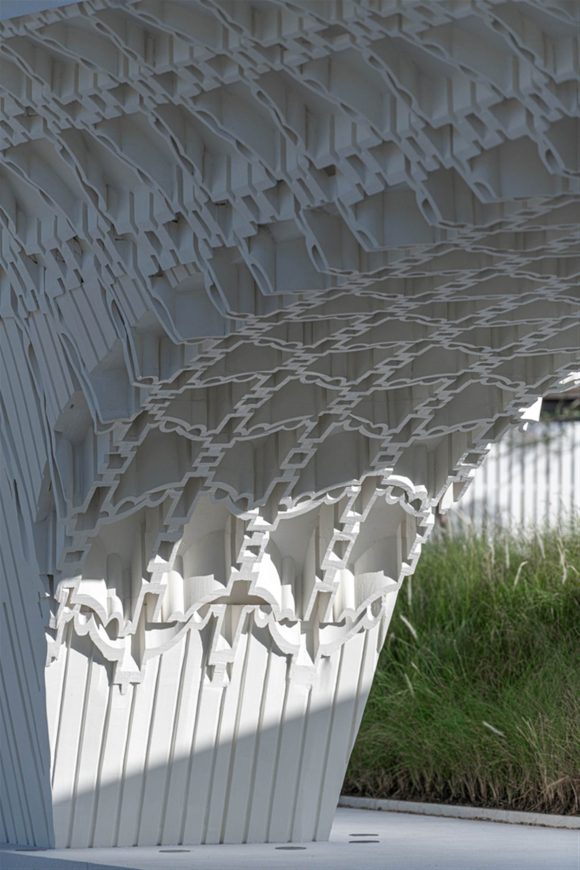
灰泥是一种由骨料、粘结剂和水制成的建筑材料,常被用作墙壁和天花板的装饰涂层,也是建筑中的雕塑和艺术材料。它起源于希腊罗马古典文化,一直以“古典风格”流行至今。遗憾的是,它经常被不恰当地用于错误的语境背景(例如显示财富),或是错误的尺度规模(例如在泰国建筑中),最后因此而变得不那么受欢迎。我们致力于用一种被称为“AUTHENTIC FAKE”的全新用法和模式来利用灰泥。
Stucco, a construction material made of aggregates, a binder, and water, is used as a decorative coating for walls and ceilings and as a sculptural and artistic material in architecture. It originated in ancient times with Greek and Roman culture and its popularity has remained as ‘classical style’ until recently. Unfortunately, often it is used inappropriately, either in the wrong context (for example to show wealth) or wrong scale (for example in domestic architecture), so has become less popular due to these associations. We were interested in introducing stucco in a new way, with different usage and patterns in a style we call ‘AUTHENTIC FAKE’.


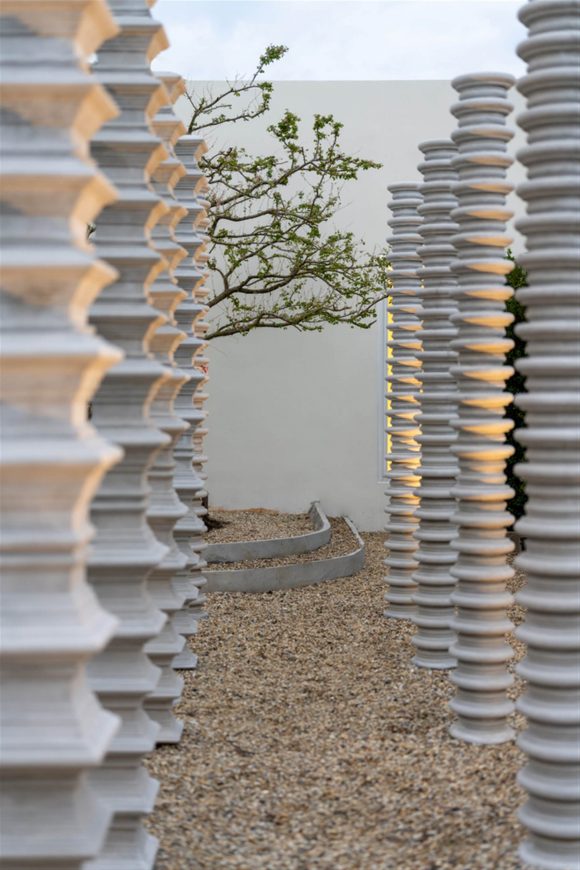
考虑到客人从入口到主厅的人行动线,我们将建筑的内部空间进行了重新排序和分隔。客人经过落客区雕塑之后,有三个节点可以供客人停留:一个照片画廊,一个带有登记簿的登记台,以及一个可以让客人与新娘新郎合影的空间。节点之间的距离长短取决于各节点活动所消耗的时间。
Spaces in Found are sequenced and separated in consideration of the flow of guests from arrival to seating in the main hall. After the drop-off sculpture, there are three nodes where guests stop: a photo gallery, a guest registry desk with a sign-in book, and a space where guests can be photographed with the bride and groom. Distances between nodes are longer or shorter depending on the time spent at each node to control the movement of people.
▼整体布局俯瞰 Overall layout overlooking
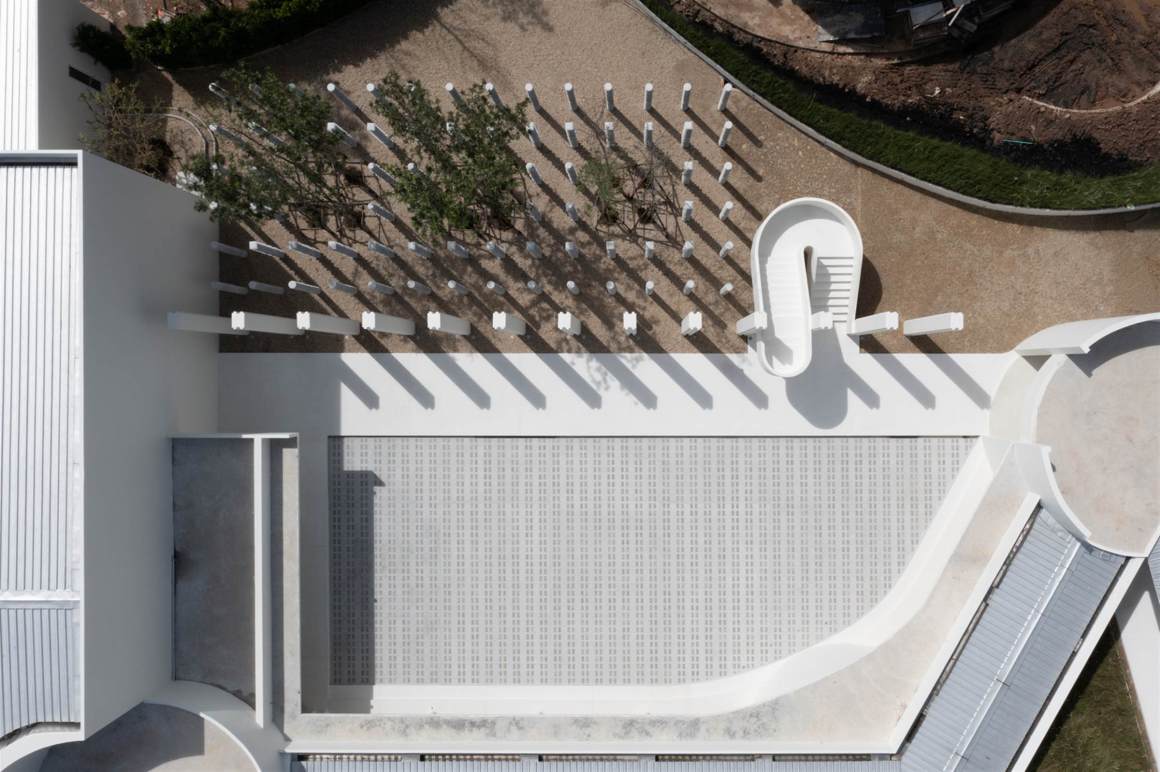
落客区雕塑是一组精心雕刻的柱子,节点间的墙壁也是用相邻排列的柱子来创建的。
The drop-off sculpture is made by carving out space from a cluster of columns, while the nodes use columns next to each other to create circular walls.
▼落客区雕塑夜景 Night view of the drop-off sculpture
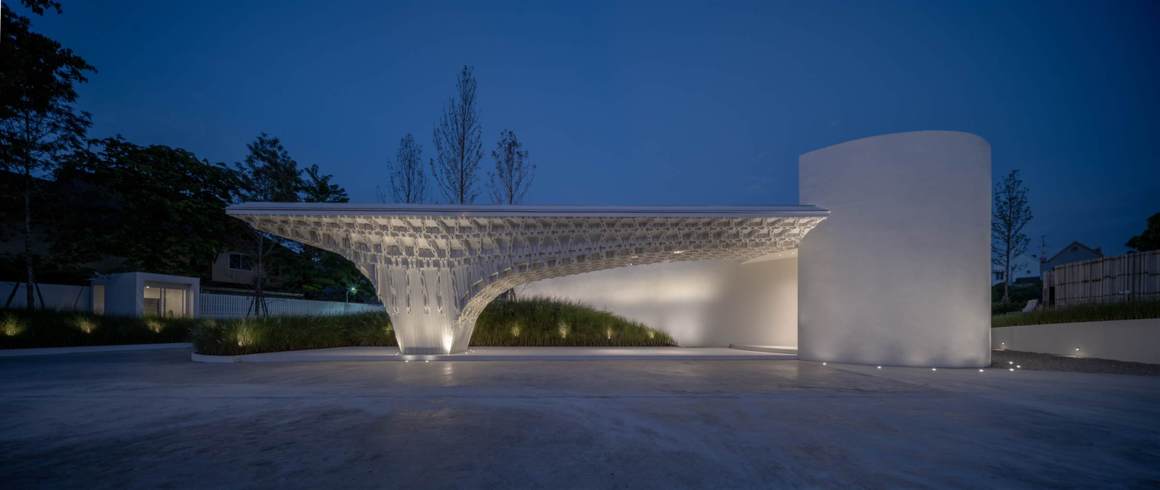
▼内庭 Inner space
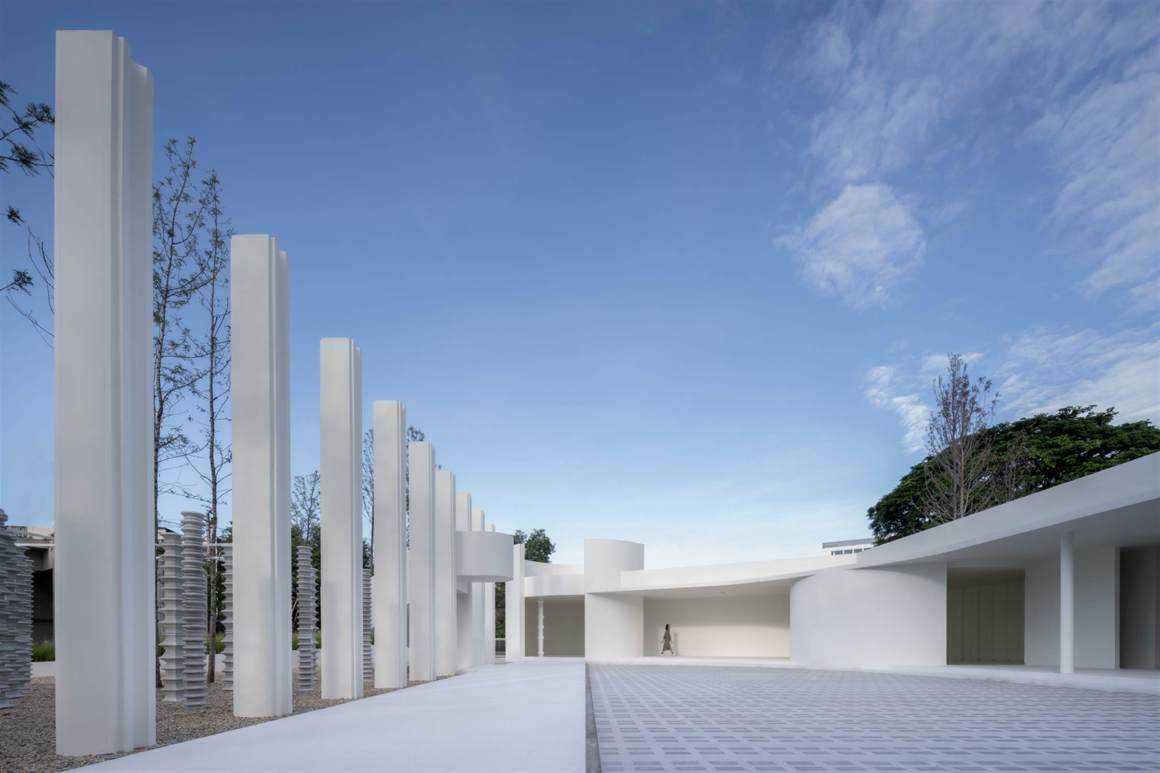
▼排列构成的“墙壁”边界,延续了几分古典韵味 The “wall” boundary that continues classical lasting appeal
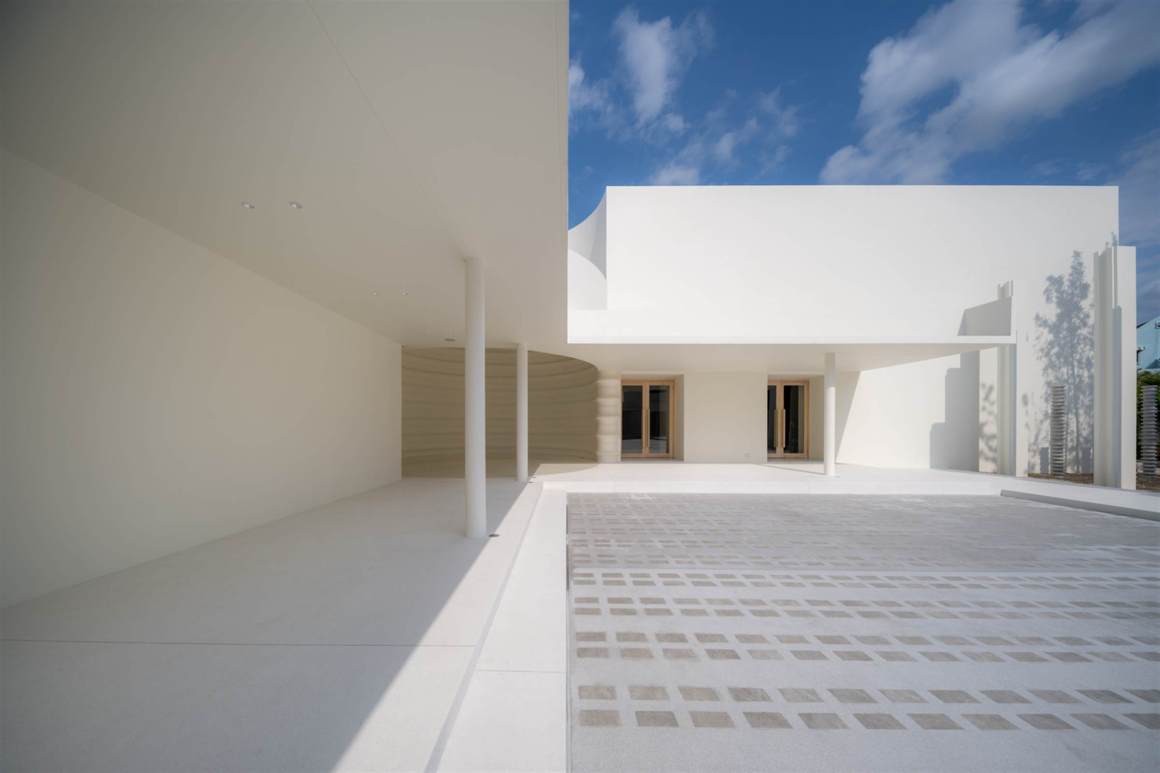

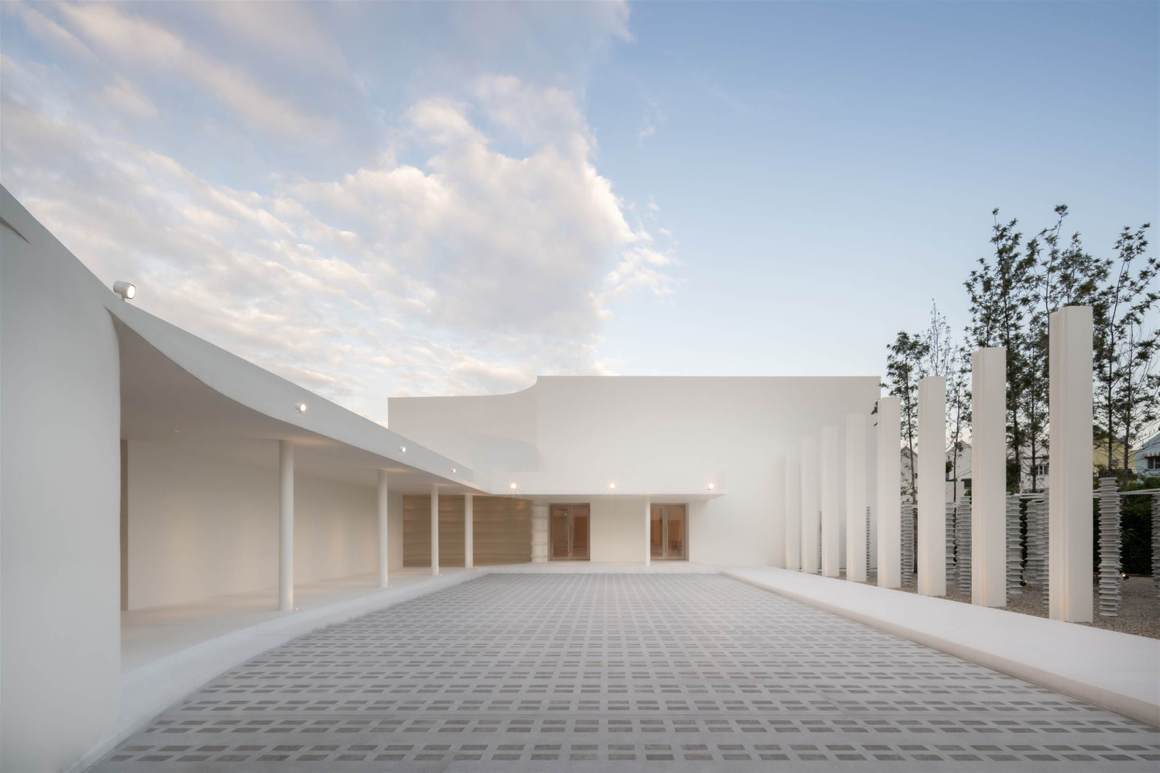
走廊旁边有一个“柱体花园”,其中共有五种类型的柱顶,它们层层堆叠形成柱体,然后再被排列成网格,形成一个探索和体验空间,人们可以在这里拍照停留。
In another area, a “garden of columns” was created with columns made of five types of capitals stacked on top of each other and then arranged in a grid. This is an area for guests to explore and take photographs.
▼柱体花园 Garden of columns
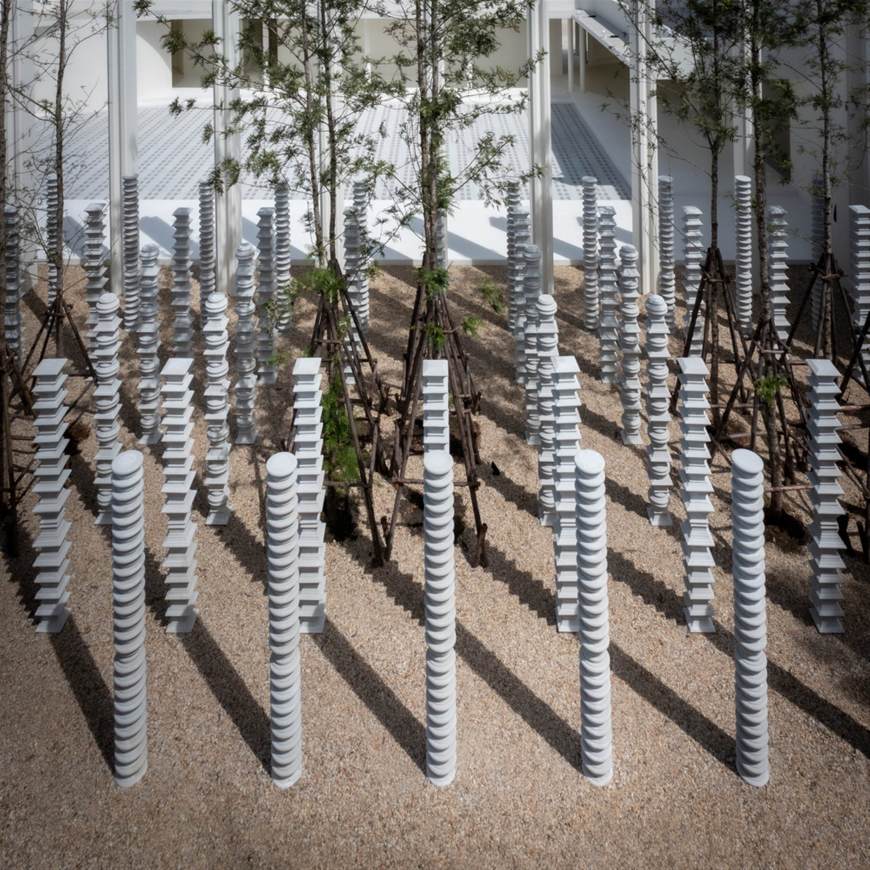


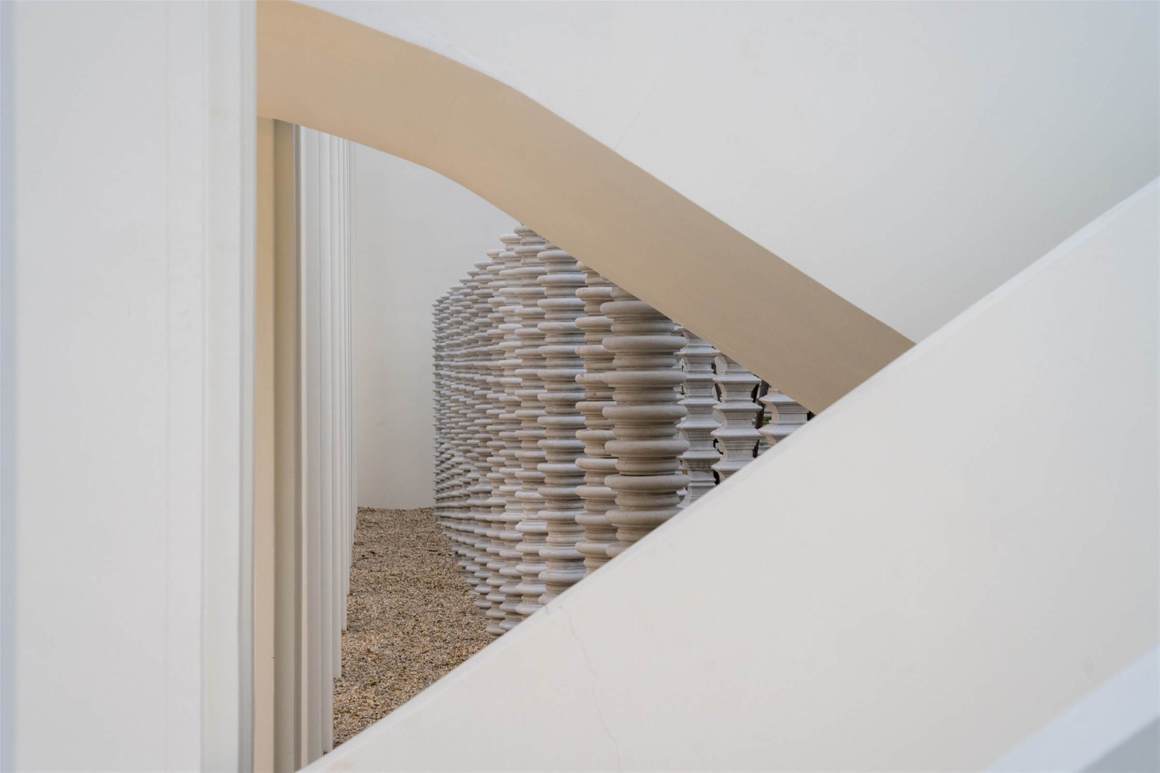
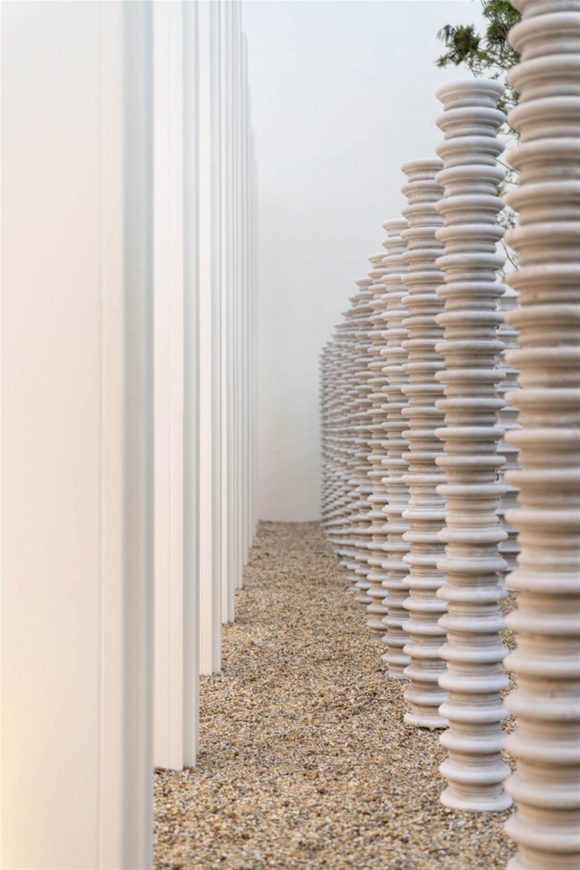
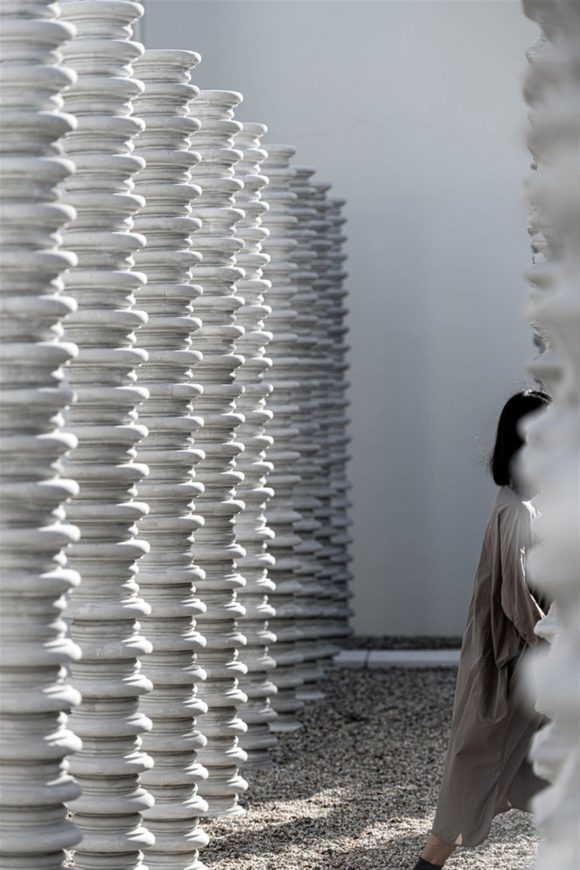
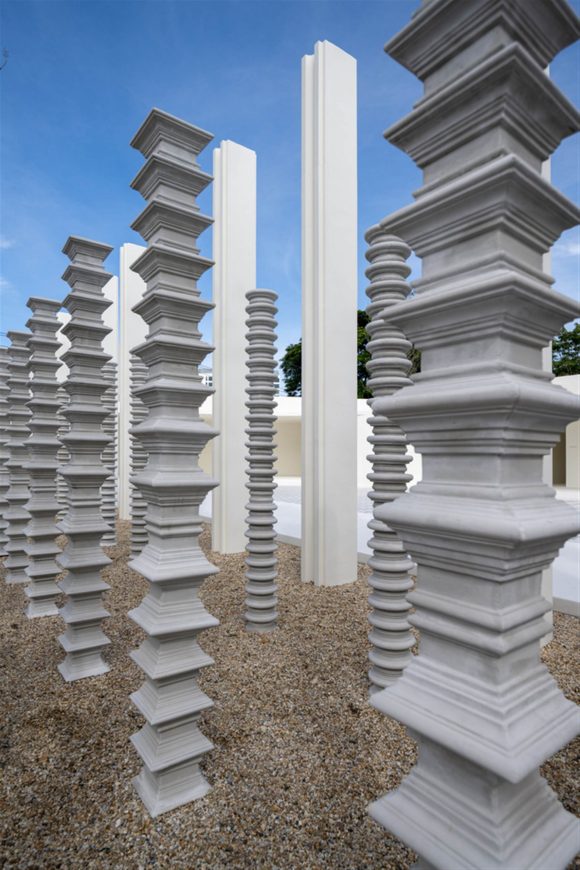
柱体花园和有序的节点之间是一个多功能庭院,其中还包括楼梯和高台,供新娘在婚礼后扔捧花。
Between the garden of columns and the sequenced nodes is a multi-purpose courtyard, which also contains the staircase and balcony for the bride to throw the bouquet after the wedding.
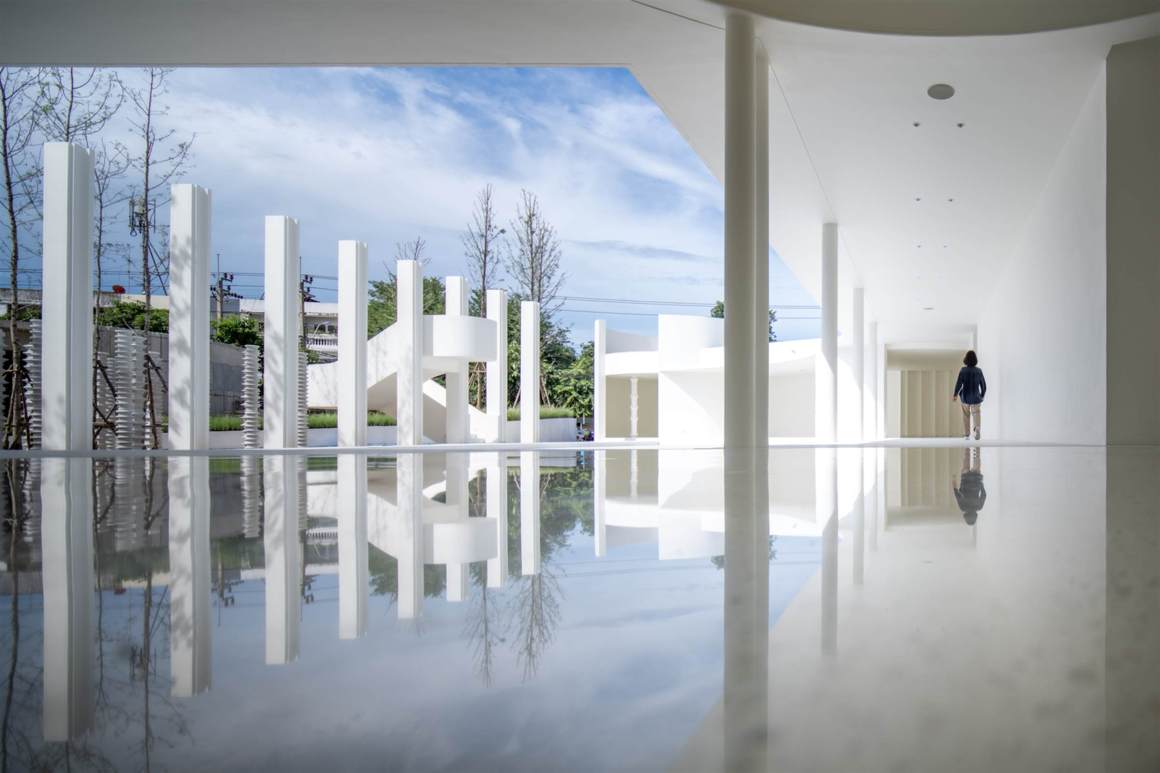
▼用于扔捧花的高台 Balcony for the bride to throw the bouquet after the wedding
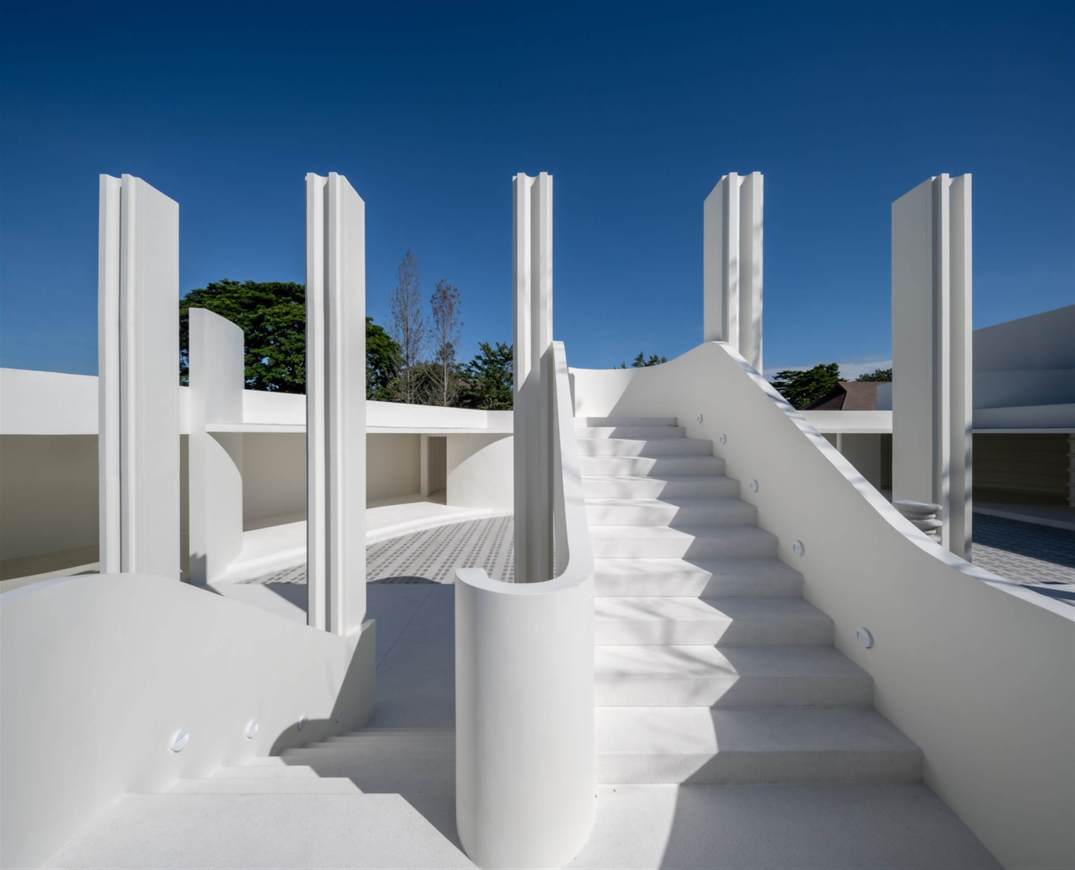
主厅有两个可用于婚礼和订婚仪式的平台,可容纳260名宾客。同样,柱子并排形成了一面有纹理的内墙。新娘房、客房、宴会厅、储藏室等功能性房间位于主婚礼舞台后面。
The main hall, with two stages for wedding and engagement ceremonies, has a capacity to hold 260 guests. Again, columns are lined up side by side to create a textured interior wall of the hall. Functional support rooms, such as bride and guest rooms, catering facilities and storage, are located behind the main wedding stage.
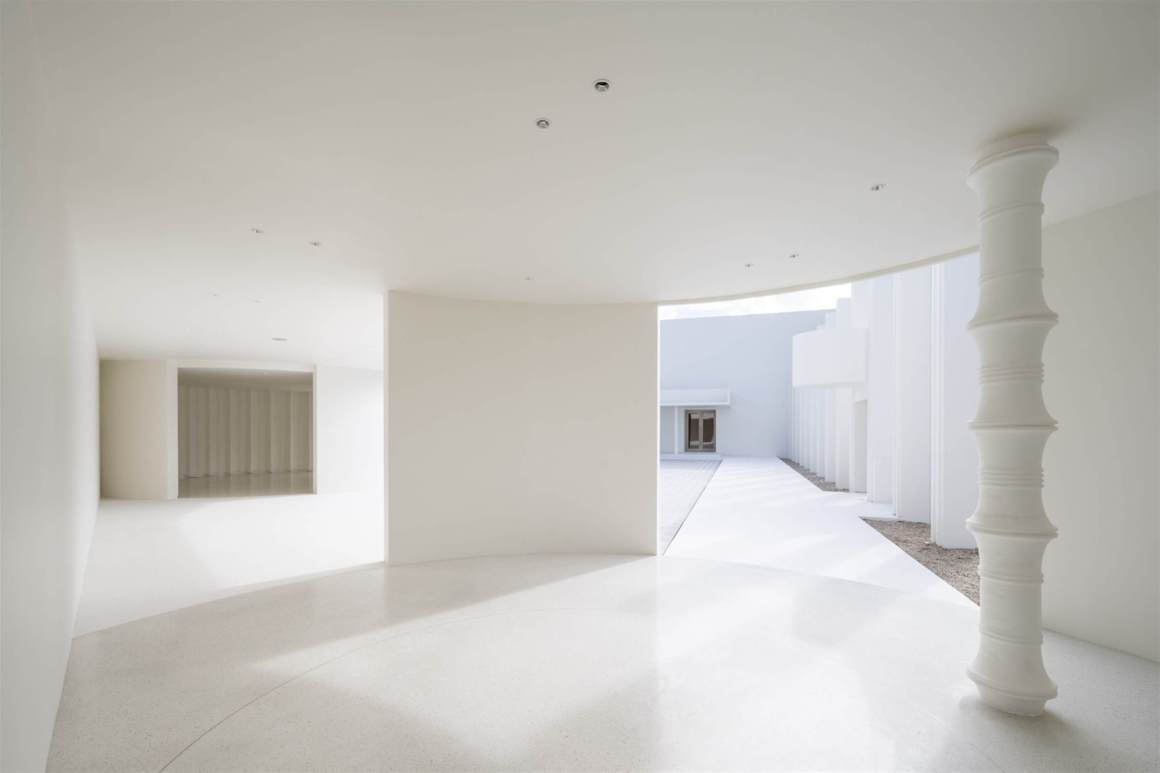
▼通往大厅的入口 Entrance to the main hall
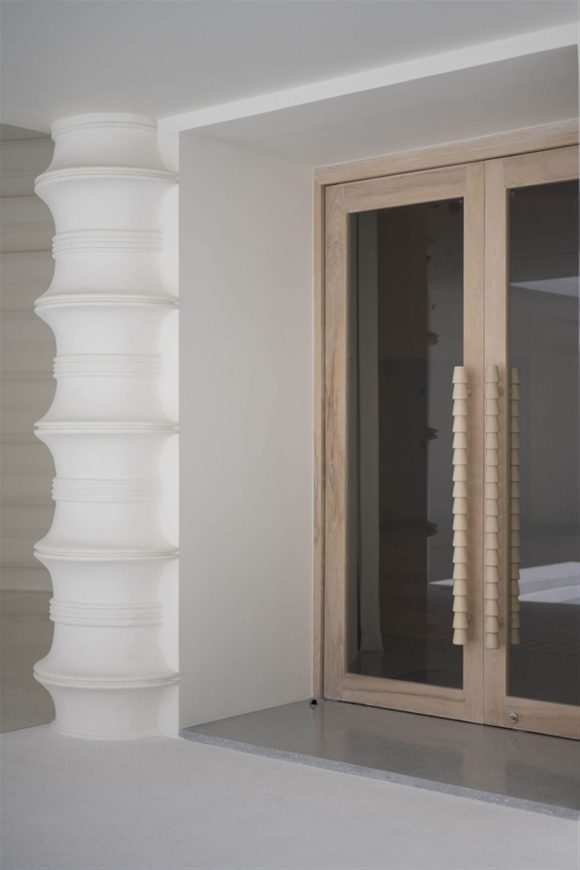
▼主厅内两个平台 Two stages in the main hall
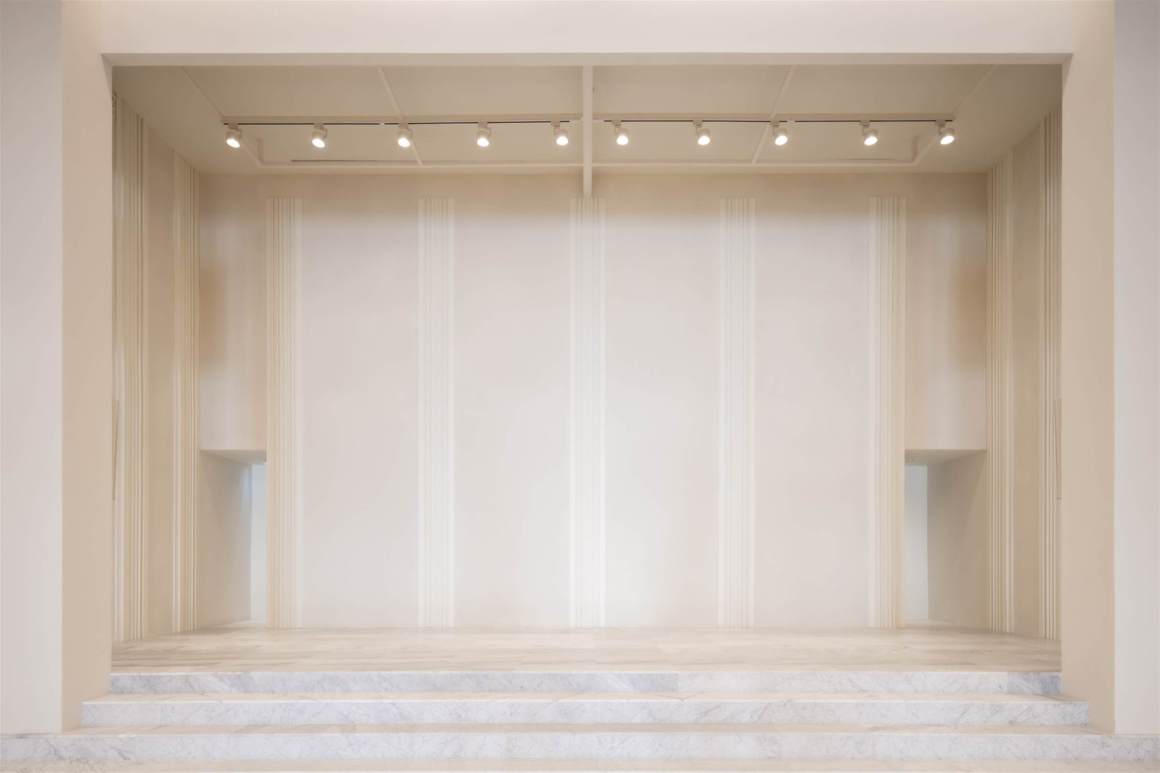
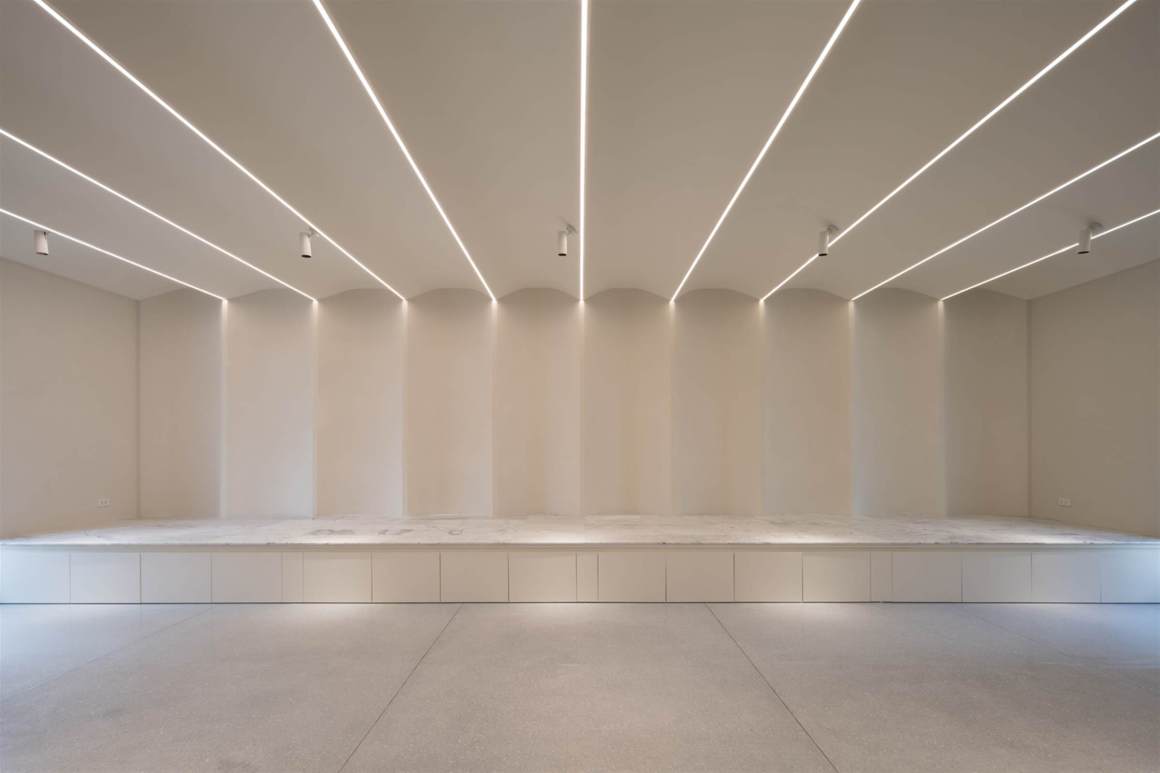
▼纹理感十足的内墙 Textured interior wall

▼随处可见的古典柱体元素 Classical columns element
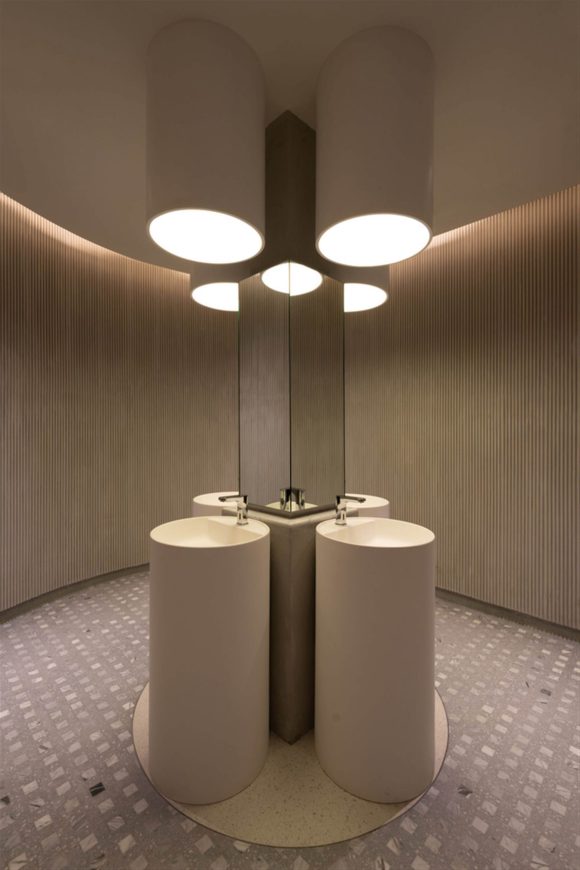

总的来说,这些都是令人难忘的梦幻般的空间,其色彩和质地类似于壁画。古典柱体的趣味性设计通常用于重要的建筑以增加仪式感,而非对古典建筑的效仿复刻。
Altogether these are memorable, dream-like spaces, with color and texture similar to fresco painting. The playful use of the classical column, usually reserved for buildings of importance, adds to the ceremonial quality of the design without being a pastiche of classical architecture.
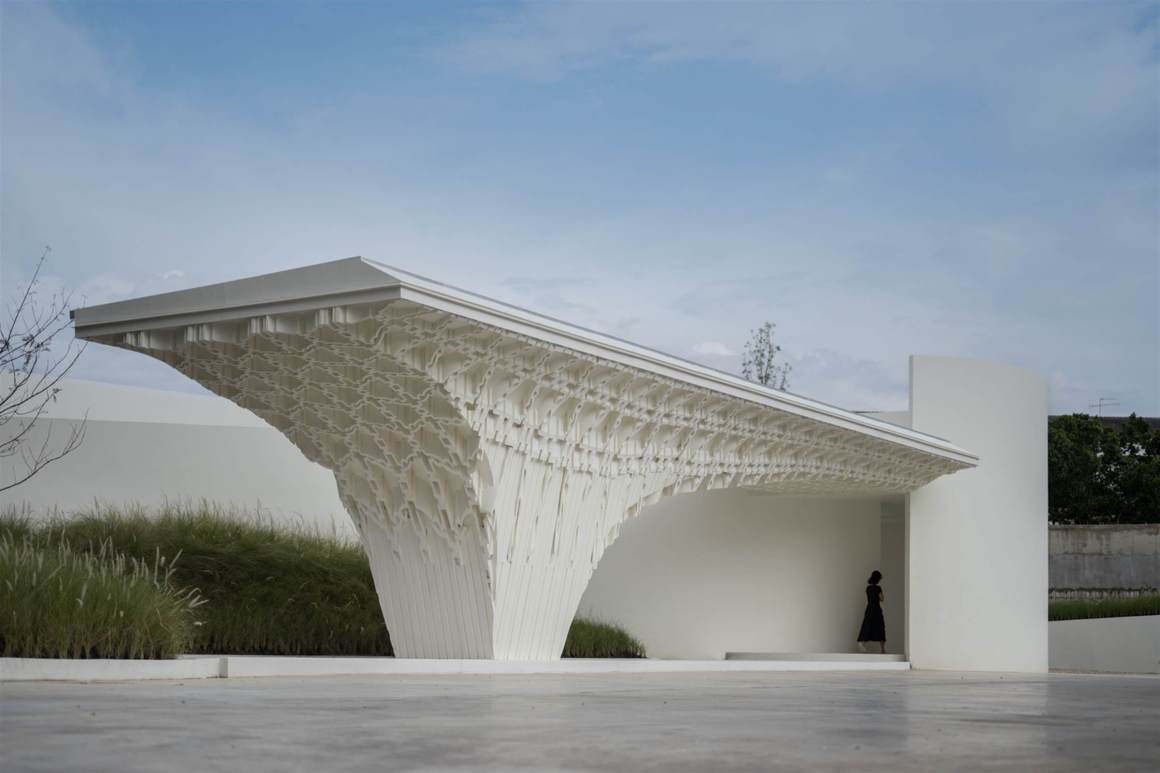
▼平面图 Plan
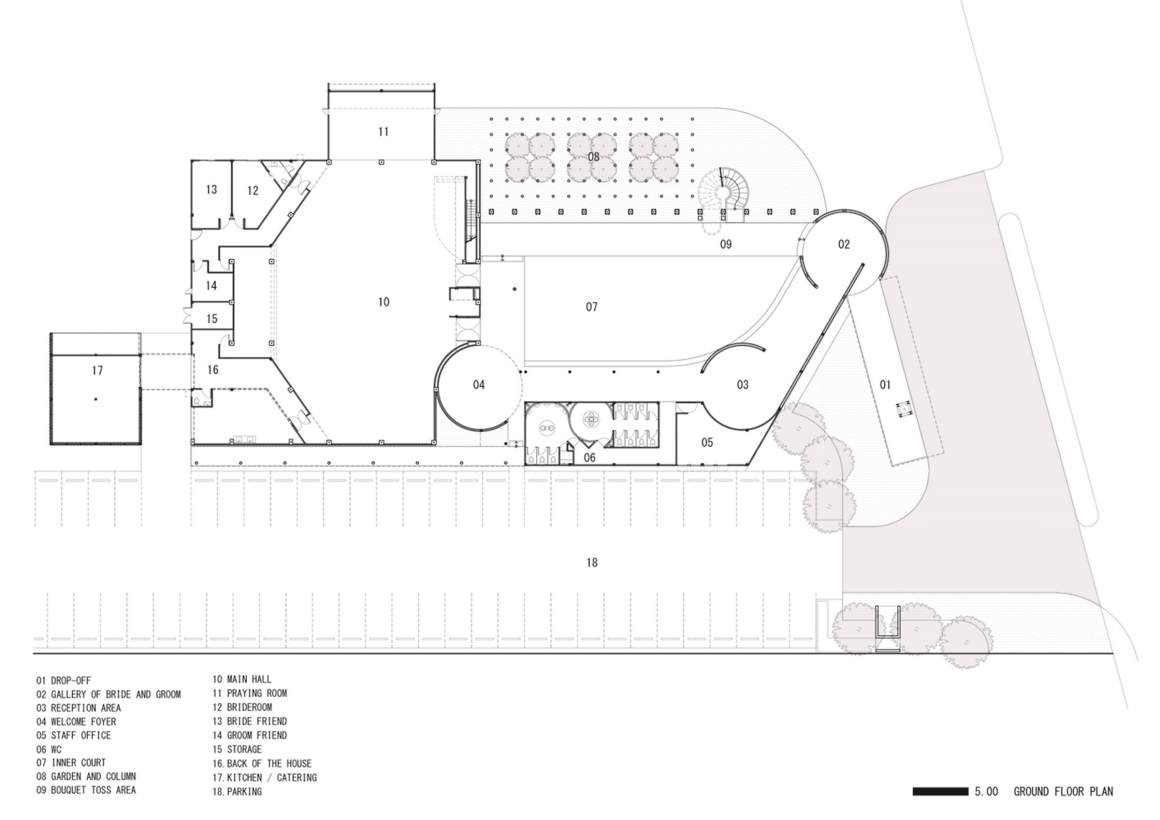
▼柱体花园分析图 Analysis of the garden of columns
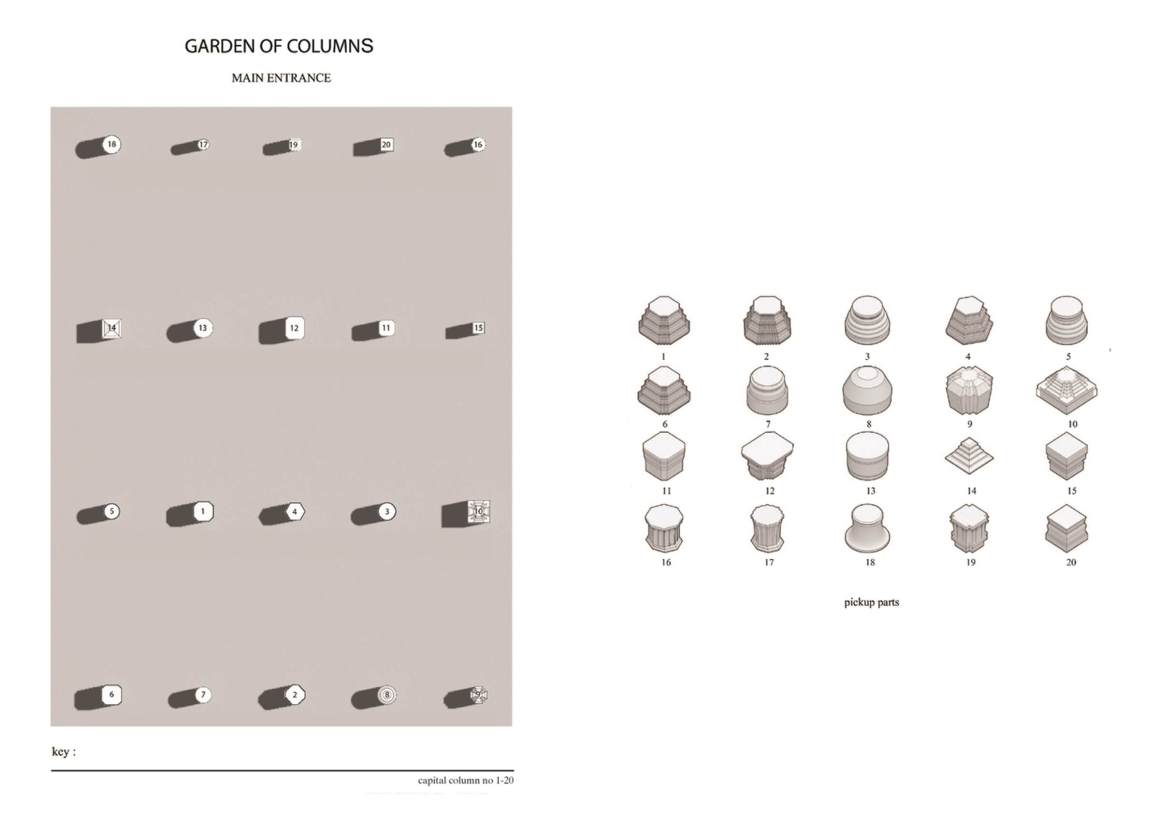
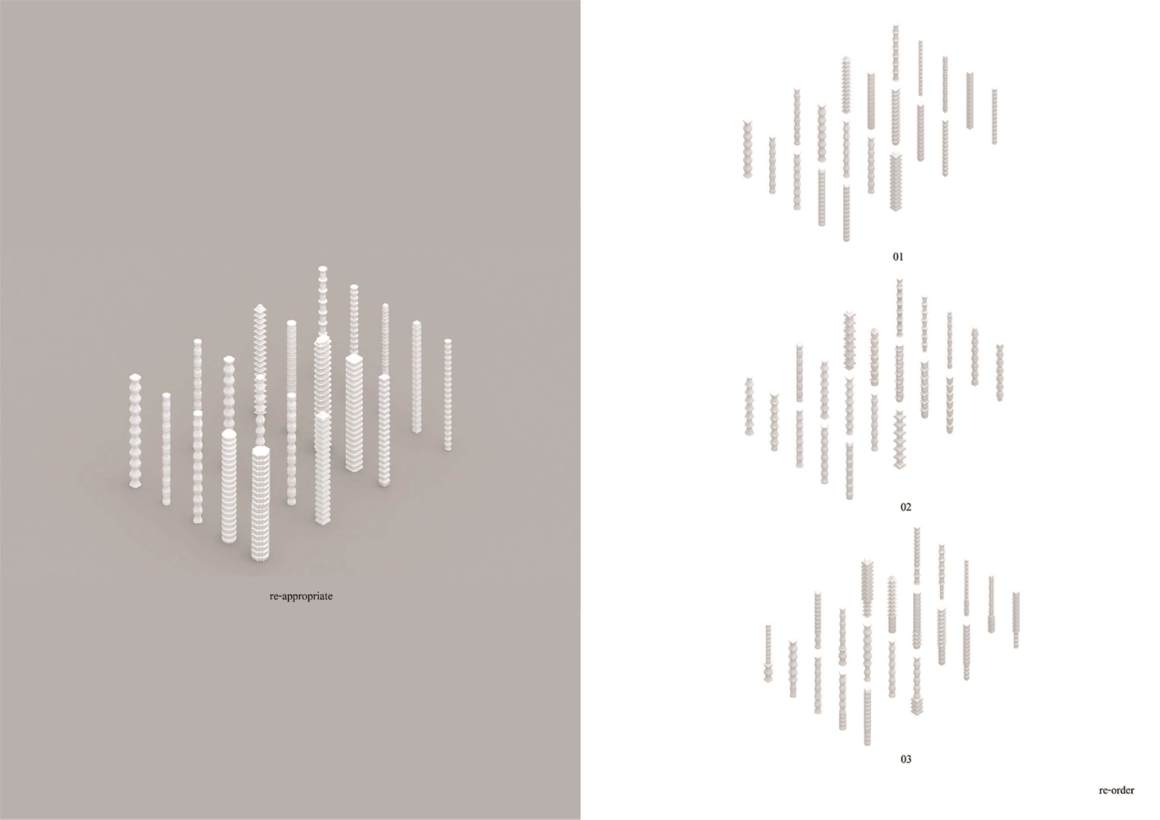

▼细部分解详图 Detail breakdown diagram
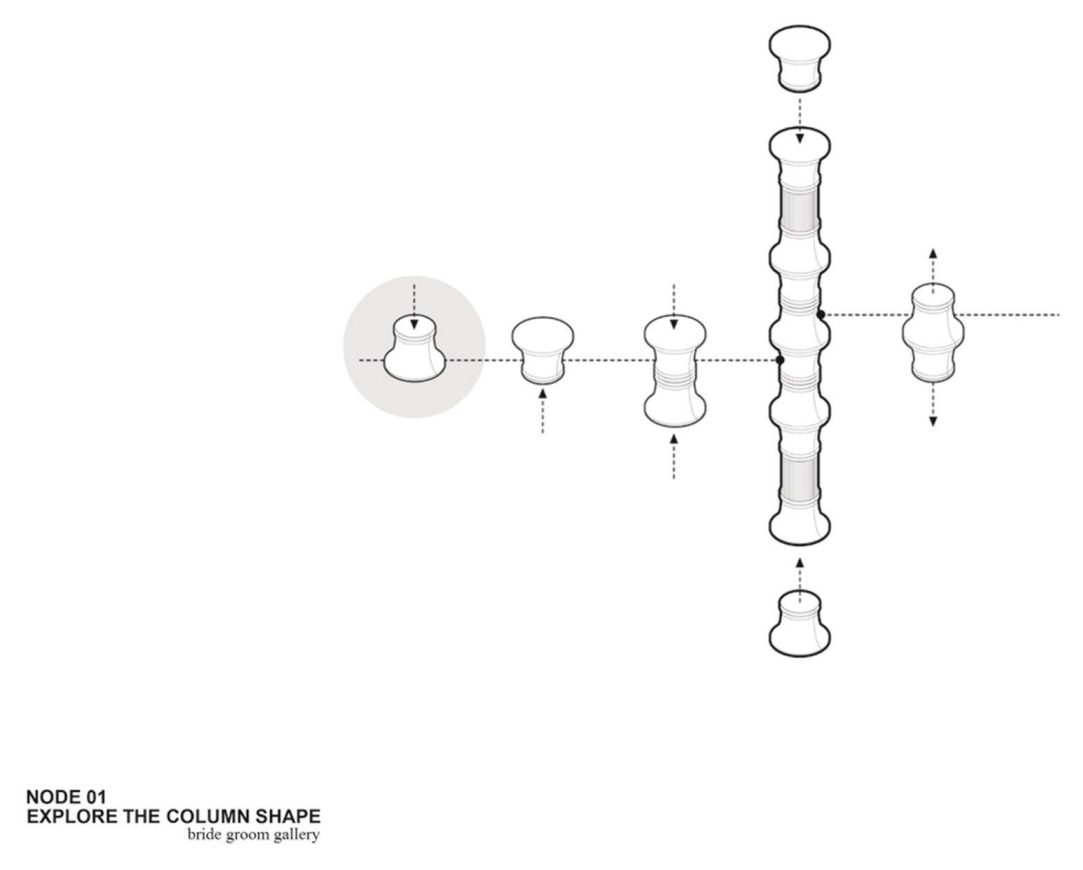

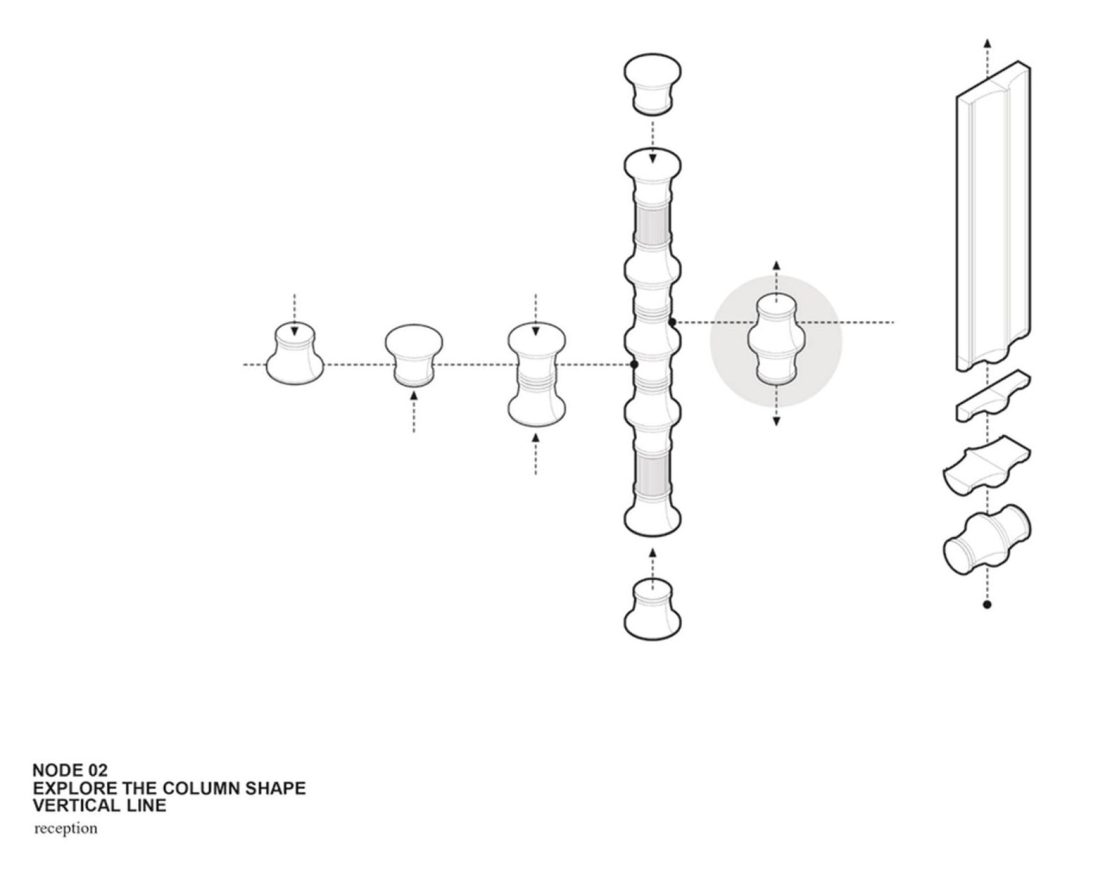

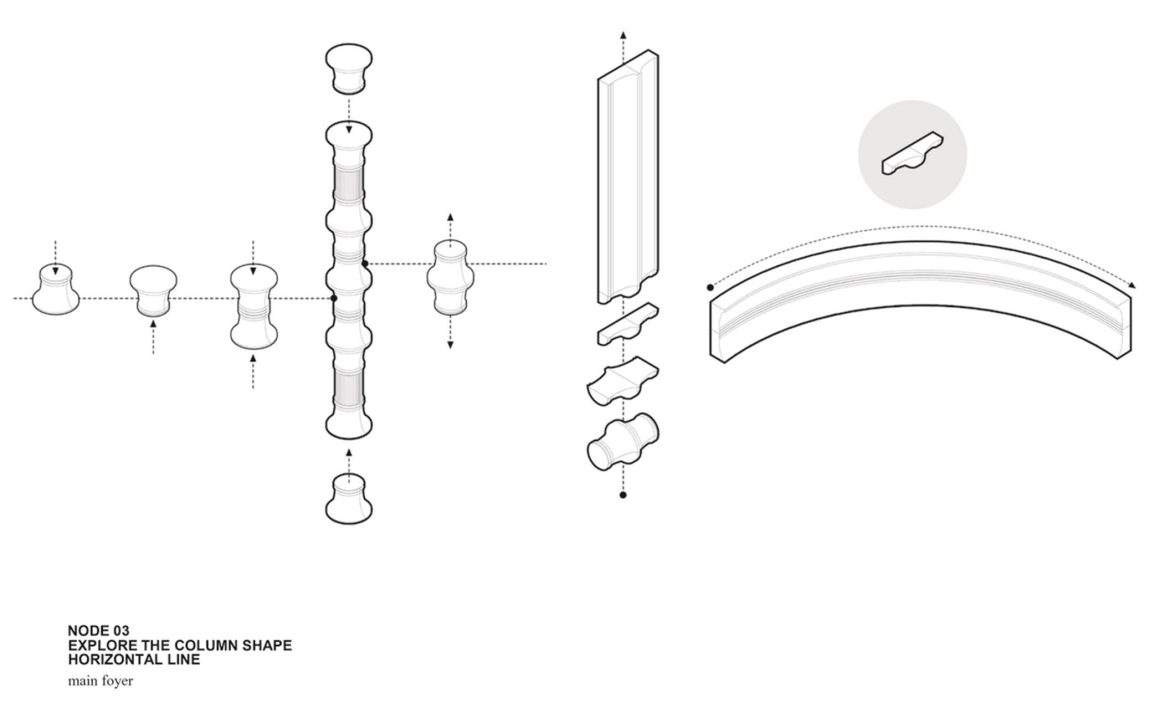
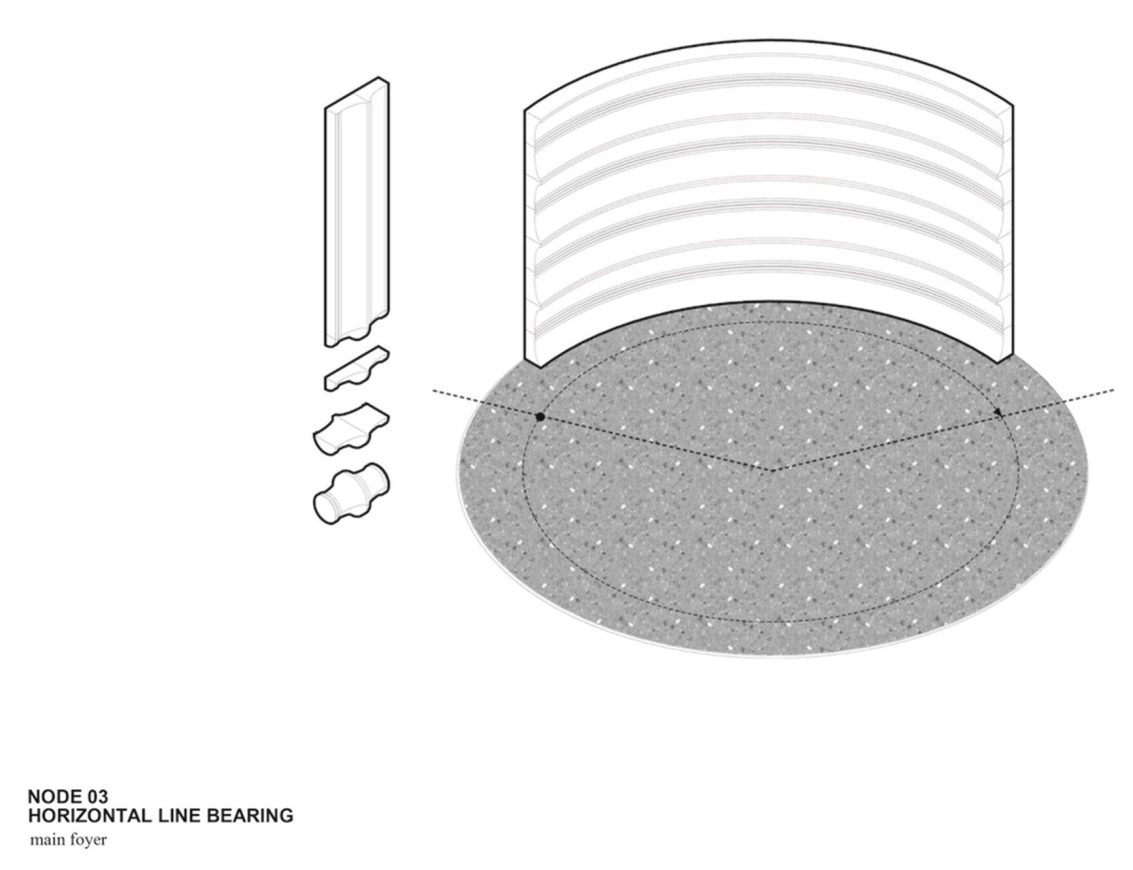
建筑公司:PHTAA Living Design
面积:4500平方米
建造年份:2021年
项目地点:泰国,曼谷
图片来源:Beersingnoi
制造商:Nontaslip, Polydec, SCG
灯光设计师:Studiuluxsit
建筑团队:PHTAA Living Design, Ponwit Ratanatanatevilai, Sukdisan Thongtan, Suradet Nutham
室内设计:Harisadhi Leelayuwapan, Lattapon Nopparatborinot, Natthawut Prathumset
顾问主管:Pongsakron Phattranurakyotin
景观设计师:Theerapong Sanguansripisut
承包商:KhongTavorn
Architects: PHTAA Living Design
Area: 4500 m²
Year: 2021
Location:Bangkok, Thailand
Photographs: Beersingnoi
Manufacturers: Nontaslip, Polydec, SCG
Lighting Designer: Studioluxsit
Architects: PHTAA Living Design, Ponwit Ratanatanatevilai, Sukdisan Thongtan, Suradet Nutham
Interior Design: Harisadhi Leelayuwapan, Lattapon Nopparatborinot, Natthawut Prathumset
Consultant Supervisor: Pongsakron Phattranurakyotin
Landscape Designer: Theerapong Sanguansripisut
Contractor: Khong Thavorn
“PHTAA在该项目中采用全新用法和模式为用材料彰显财富的错误设计语境带来了改变,并重新诠释了其古典风格。”
审稿编辑:gentlebeats
更多 Read more about:PHTAA Living Design




0 Comments